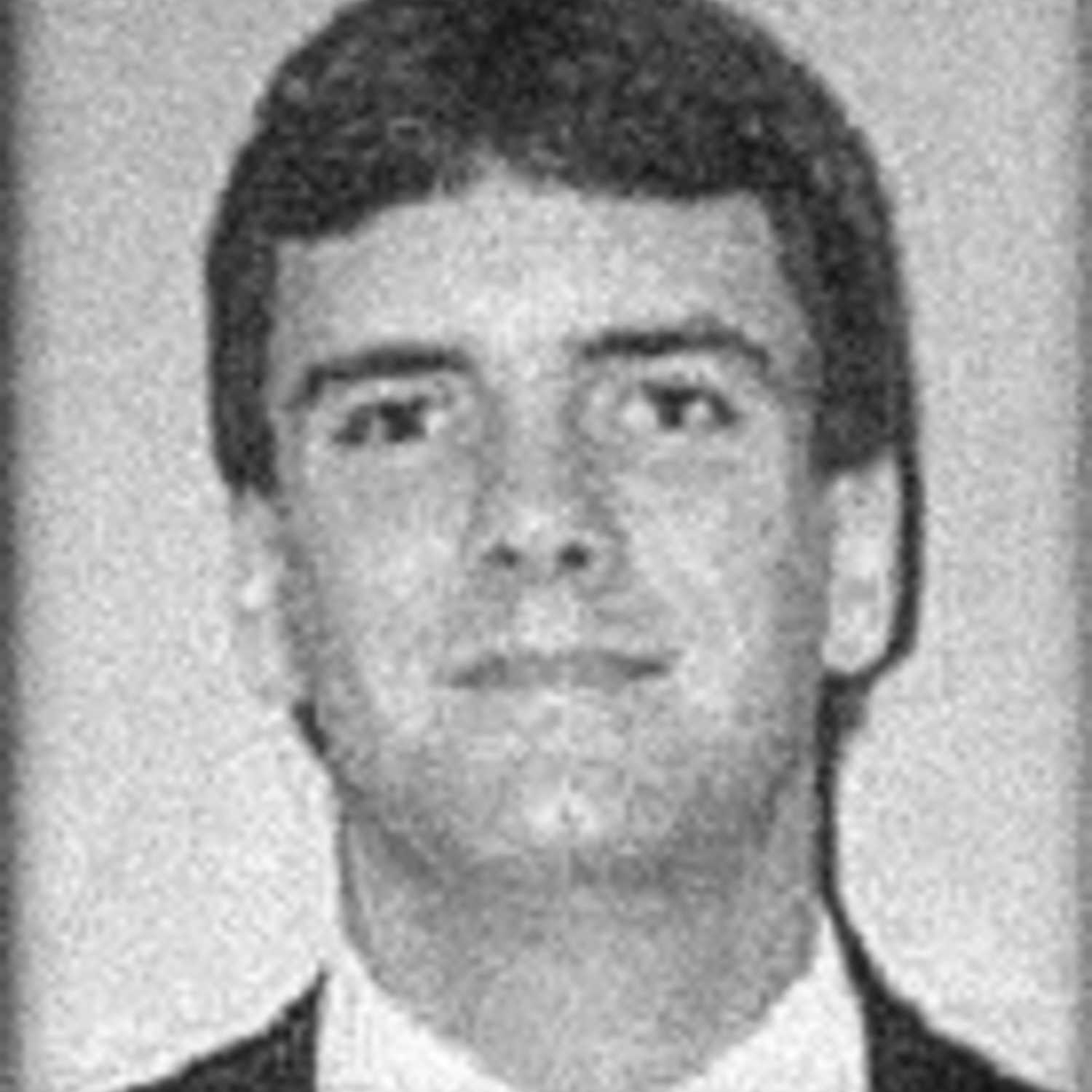Frank A. Darling, a five-year CIA employee, was known as a wise leader with the uncanny ability to solve complex problems while making it look easy. Although only at the Agency for a short time, he quickly rose through the ranks, and was often sought after for his technical expertise and thoughtful advice to fellow colleagues.
Frank was killed in January 1993 while on his way to work at CIA Headquarters. As Frank and his wife, Judy, sat in their car waiting for a traffic light to change so that they could enter through the main gate of the Agency compound, a gunman opened fire on the stopped cars. In the car adjacent to Frank’s, Dr. Lansing Bennett, an Agency medical officer, was also shot and killed. Three other people were wounded.
Early Years:
Frank Darling grew up in southeastern Pennsylvania, attending Council Rock High School in Newtown. He went on to graduate from Spring Garden College in Philadelphia with a Bachelor of Science in Electronics Engineering Technology in 1986.
During his school years, Frank enjoyed fishing, weightlifting, and tinkering with CB Radios. While in college, he worked as a part-time radio dispatcher for the local police department, answering emergency calls and preparing incident reports. He also worked part-time installing, maintaining, trouble-shooting, and repairing two-way radios and transmission tower sites for the county police and fire departments, and served as a volunteer fireman for the Northampton Township Fire Company, achieving the rank of Lieutenant.
Life at CIA:
Frank joined the Central Intelligence Agency in March 1987 as an electronic technician. Armed with a degree in Electronics Engineering Technology, and with computer and some software expertise, Frank made an immediate impression on his office colleagues with his ability to trouble-shoot and repair a broad range of technical equipment—most of which was Agency-specific and not familiar to him. His skills often matched those of Agency field engineers serving at considerably higher levels than he was.
Early in his career Frank was chosen as a team leader. His peers viewed him as an adviser, confidant, and leader—quite a feat for a relatively new employee. Later, managers recognized him for volunteering to draft and successfully authoring a complex satellite-tracking manual. The publication became a standard part of the operations package for that system.
In 1987, Frank was assigned overseas as an assistant field engineer. He served in Europe and the Middle East for four years. This was a perfect opportunity for him to showcase his excellent organizational and advanced technical skills as a project manager and team leader, updating and constructing Agency communications capabilities. A satellite installation project he worked on drew particular praise from both CIA Headquarters and the chief of station at the site. To the uninitiated, this major technical installation seemed to be a simple and seamless project. It was not.
As Frank continued his rapid development as a field engineer, Agency stations called frequently upon his impressive technical capabilities and problem-solving skills. He traveled and worked all over the globe.
His Final Mission:
In February 1991, Frank was assigned to CIA Headquarters as a Field Engineer. With the stability of a Headquarters assignment and, for the most part, his hectic temporary duty assignments completed for the foreseeable future, Frank got married and made plans to go back to school in pursuit of an advanced degree in electronics engineering.
On Monday, January 25, 1993, at around 8:00am, a number of cars had stopped temporarily in morning rush-hour traffic in the northbound, left-turn lanes on Route 123 at the main entrance to the Headquarters compound of the Central Intelligence Agency. The cars had stopped at the red light and were waiting to turn onto the Agency compound.
With the cars unable to move, a lone gunman emerged from another vehicle, which he had stopped behind the other cars. The gunman, armed with an AK-47 assault rifle, proceeded to move among the stopped vehicles, firing into them. Within seconds, Frank Darling and Dr. Bennett were killed and three others wounded, one gravely. Frank’s wife Judy, sitting beside him in the car, was uninjured. The gunman, a Pakistani national later identified as Aimal Kasi, fled the scene. In 1997, he was captured in Pakistan and returned to the US, where he was tried, convicted, and sentenced to death. Kasi was executed on November 14, 2002.
Frank A. Darling was 28 years old when he was killed. His wife, mother, and brother survived him. Frank was posthumously awarded the Agency’s Intelligence Commendation medal in recognition of his distinguished service to the Central Intelligence Agency.
On May 24, 2002, Agency officers dedicated the Route 123 Memorial to our two fallen colleagues. The Memorial is located on the west side of the Virginia Route 123 entrance (alongside the outbound right lane). It includes a walkway leading to a 9-foot by 3-foot granite wall. Benches dedicated to Frank Darling and Lansing Bennett face each other in front of the granite wall.

